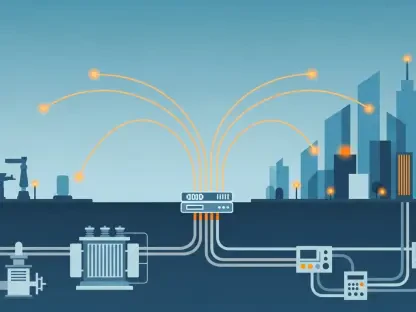Europe faces a daunting environmental crisis with electronic waste (e-waste) piling up at an alarming rate, contributing to around 5 million tonnes of discarded electronics annually within the EU, as reported by Eurostat. With less than 40% of these products being recycled, the bulk ends up in landfills, posing significant ecological risks due to toxic materials and resource loss. This pressing issue has sparked a wave of innovation and policy reform across the region, aiming to curb the damage through sustainable practices in electronics design and manufacturing. The focus is shifting toward a circular economy, where products are built to last, be repaired, and eventually recycled, reducing the environmental footprint of a tech-driven society.
The urgency of this challenge has galvanized collaborative efforts, with initiatives like the EU-funded SUSTRONICS project leading the charge. This ambitious program, involving 46 partners from 11 countries and guided by Dutch technology leader Philips, seeks to revolutionize how electronics are made by prioritizing eco-friendly materials and processes. Supported by the Chips Joint Undertaking, SUSTRONICS targets sectors ranging from healthcare to consumer goods, striving to embed sustainability at every stage of a product’s lifecycle. As Europe pushes forward, the blend of cutting-edge research and robust regulations offers a glimpse of hope in tackling a problem that threatens both the environment and future resource availability.
Confronting the E-Waste Crisis
Tackling the Recycling Shortfall
The scale of Europe’s e-waste problem is staggering, with millions of tonnes of discarded electronics accumulating each year, yet only a small fraction being properly recycled. The complexity of modern devices, often made from mixed materials that are difficult to separate, exacerbates the issue, leading to vast amounts of waste ending up in landfills. This not only squanders valuable resources but also releases harmful substances into the environment, posing risks to soil, water, and air quality. The low recycling rate—less than 40% of electronics placed on the market—underscores a critical gap in current waste management systems. Addressing this requires a fundamental shift in how products are designed, moving away from disposable mindsets toward models that facilitate disassembly and material recovery, ensuring that valuable components can be reused rather than lost to waste streams.
Beyond the sheer volume of e-waste, the environmental cost of inaction is becoming increasingly clear as the demand for electronics continues to rise. Landfills brimming with outdated devices contribute to pollution, while the extraction of raw materials for new products depletes finite resources and drives up carbon emissions. The challenge lies in creating systems that incentivize recycling and make it easier for consumers and businesses to participate. Efforts to close the recycling gap must also consider the global dimension of e-waste, as some discarded electronics are shipped to less-regulated regions, often under poor conditions. Europe’s response, therefore, needs to balance local innovation with international cooperation to ensure that solutions are both effective and ethical, paving the way for a more sustainable approach to managing electronic lifecycles.
Barriers to Effective Waste Management
A significant hurdle in combating e-waste lies in the inherent design of many electronic products, which often prioritizes cost and convenience over sustainability. Devices are frequently assembled with glued components or proprietary parts, making repairs or recycling a complex and costly endeavor. This design philosophy, rooted in a linear economy of “make, use, dispose,” stands in stark contrast to the principles of a circular economy that Europe is striving to adopt. The lack of standardization across products further complicates recycling efforts, as different brands and models require unique processes to break down materials. Without a cohesive strategy, even well-intentioned recycling programs struggle to keep pace with the rapid turnover of technology, leaving vast amounts of potentially reusable resources untapped.
Another layer of difficulty comes from consumer behavior and awareness, which often lag behind technological and policy advancements. Many individuals remain unaware of proper e-waste disposal methods or lack access to convenient recycling facilities, resulting in improper disposal that undermines broader sustainability goals. Additionally, the economic incentives for manufacturers to prioritize short-lived products over durable, repairable ones perpetuate the cycle of waste. Shifting this paradigm demands not only innovation in product design but also education campaigns to inform the public about the environmental impact of their choices. By addressing these barriers through a combination of better design practices and societal engagement, Europe can begin to dismantle the systemic issues fueling the e-waste crisis.
Pioneering Sustainable Electronics Solutions
Revolutionizing Materials and Design
At the heart of Europe’s fight against e-waste is the SUSTRONICS initiative, a groundbreaking effort to rethink the very materials used in electronics manufacturing. By exploring alternatives such as bio-based and paper-based components, alongside more abundant resources like copper and carbon, the project aims to replace scarce and environmentally damaging materials like silver. This shift is crucial for reducing the ecological footprint of electronics without sacrificing performance, a balance that sustainability consultant Ramon Caanen at Philips has identified as a key challenge. The research focuses on embedding sustainability into the design phase, ensuring that products are not only functional but also easier to recycle or repurpose at the end of their lifecycle, setting a new benchmark for the industry.
The implications of these material innovations extend far beyond environmental benefits, potentially reshaping the economics of electronics production. By relying on more readily available resources, manufacturers could reduce dependency on volatile markets for rare materials, stabilizing costs while aligning with green principles. However, the transition is not without hurdles, as alternative materials must meet the rigorous performance standards demanded by modern technology. SUSTRONICS is tackling this through rigorous testing and collaboration across its 46 partners, ensuring that sustainability does not come at the expense of quality. This forward-thinking approach could serve as a model for global industries, demonstrating that environmental responsibility and technological advancement can coexist in a mutually beneficial framework.
Healthcare Innovations with a Green Focus
One of the most promising arenas for SUSTRONICS is healthcare, where pilot projects are demonstrating the transformative potential of sustainable electronics. A notable example is the smart incontinence pad developed by Essity Hygiene and Health in Sweden, which incorporates recyclable components and reusable readers to enhance patient care while significantly cutting down on waste. This innovation addresses a critical need in medical settings, where single-use products often contribute to substantial e-waste volumes. By prioritizing materials that can be recycled and designing systems that allow for component reuse, the project not only improves patient outcomes but also sets a precedent for how medical technology can align with environmental goals.
Further expanding the scope, SUSTRONICS is also behind developments like glucose-monitoring skin patches and smart wound dressings, both engineered with sustainability in mind. These devices, traditionally disposable, are being reimagined to minimize their environmental impact through careful material selection and design for recyclability. The challenge of maintaining functionality in such specialized applications is significant, yet the initiative’s focus on balancing user needs with ecological responsibility offers a compelling solution. These healthcare advancements highlight a broader truth: sustainable electronics can deliver tangible benefits to end-users while addressing systemic waste issues, proving that innovation in one sector can ripple out to influence others with shared principles of care and conservation.
Shaping the Future Through Policy and Industry
Regulatory Frameworks Leading the Way
The EU is bolstering its fight against e-waste with robust policies that compel manufacturers to rethink product lifespans and recyclability. The eco-design and right-to-repair regulations introduced in 2024 mark a pivotal step, mandating that electronics be built for durability, energy efficiency, and ease of repair. These rules aim to disrupt the throwaway culture that dominates much of the tech industry, ensuring that consumers have access to products that last longer and can be fixed rather than discarded. Looking ahead, the anticipated Circular Economy Act in 2026, alongside the target to double material reuse and recycling rates to 24% by 2030 under the Clean Industrial Deal, reflects a steadfast commitment to creating a sustainable electronics landscape across Europe.
These regulatory measures are not merely guidelines but powerful catalysts for industry-wide change, pushing companies to innovate within a framework of accountability. By setting clear standards, the EU is fostering an environment where sustainability becomes a competitive advantage rather than a burden. This policy-driven approach also encourages collaboration between governments and private sectors, aligning economic incentives with environmental priorities. The ripple effects are evident as manufacturers begin to integrate eco-friendly practices into their core operations, responding to both legal mandates and growing consumer demand for greener products. Such policies position Europe as a global leader in sustainable technology, offering a blueprint for other regions to follow in addressing the universal challenge of e-waste.
Broadening Applications Across Sectors
SUSTRONICS extends its influence beyond healthcare, applying sustainable principles to consumer goods like shavers and lighting, where repairability and energy efficiency take center stage. These pilot projects emphasize designs that allow for easy dismantling, ensuring that components can be recycled or reused rather than discarded. By focusing on everyday items that are often replaced frequently, the initiative tackles waste at a grassroots level, influencing consumer behavior through products that are both practical and environmentally conscious. This approach underscores the versatility of sustainable electronics, proving that solutions developed in one field can be adapted to others, amplifying their overall impact on reducing e-waste across diverse markets.
The potential for transformation in these sectors is immense, as consumer goods represent a significant portion of electronic waste due to their high turnover rates. SUSTRONICS’ emphasis on lowering energy consumption also aligns with broader EU goals for carbon neutrality, addressing multiple environmental concerns simultaneously. Challenges remain, particularly in scaling these innovations to meet mass-market demands while maintaining affordability. Yet, the initiative’s cross-industry focus offers a holistic perspective, demonstrating how interconnected sectors can collaborate toward a shared vision of sustainability. As these efforts mature, they pave the way for a future where electronics in all forms contribute to a circular economy, balancing human needs with planetary health.









